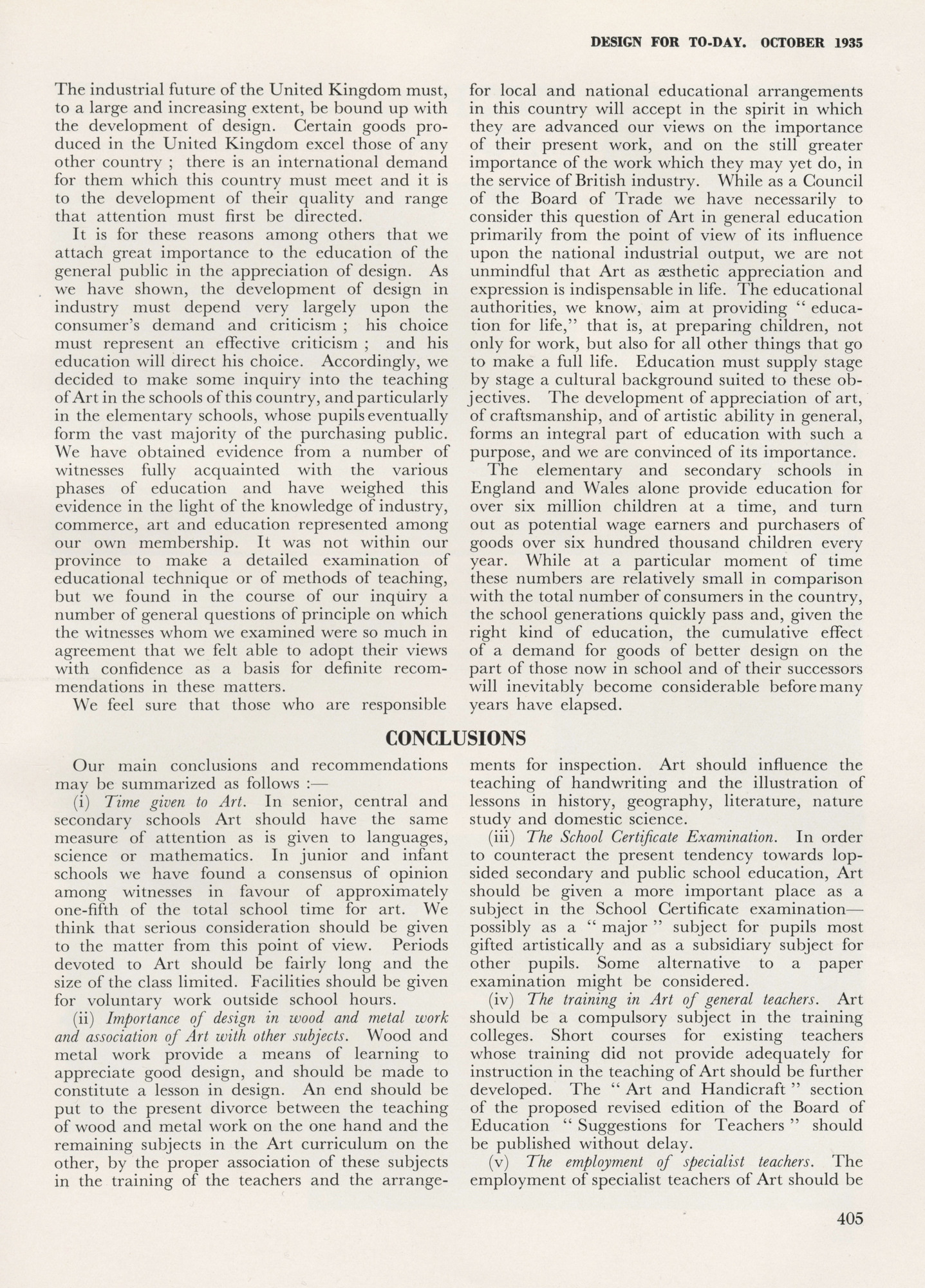10 of
You are browsing the full text of the article: From The Report of The Council for Art and Industry
Click here to go back to the list of articles for
Issue:
Volume: 3 of Design For Today
| Design For Today 3 1935 Page: 404 | ||||||||||||||||||||||||||
| From The Report of The Council for Art and Industry | ||||||||||||||||||||||||||
|

|
|
||||||||||||||||||||||||
| Design For Today 3 1935 Page: 405 | ||||||||||||||||||||||||||
| From The Report of The Council for Art and Industry | ||||||||||||||||||||||||||
|

|
|
||||||||||||||||||||||||
| Design For Today 3 1935 Page: 406 | |||||||||||||||||||||||||||||||
| From The Report of The Council for Art and Industry | |||||||||||||||||||||||||||||||
|

|
|
|||||||||||||||||||||||||||||


